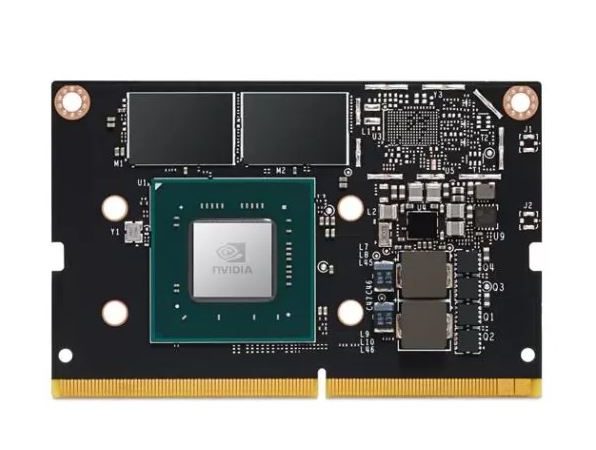Introduction In today’s fast-evolving landscape of artificial intelligence and machine learning, robotics is undergoing a revolutionary transformation. One of the key technologies driving this innovation is Nvidia Jetson, a powerful AI computing platform designed to handle complex workloads at the edge. Combining high-performance processing capabilities with low power consumption, this compact module is enabling the
Introduction
In today’s fast-evolving landscape of artificial intelligence and machine learning, robotics is undergoing a revolutionary transformation. One of the key technologies driving this innovation is Nvidia Jetson, a powerful AI computing platform designed to handle complex workloads at the edge. Combining high-performance processing capabilities with low power consumption, this compact module is enabling the development of autonomous robots that can perceive, learn, and interact with their environments in real-time.
The Evolution of Robotics and the Need for Edge AI
Over the past decade, robotics has evolved beyond traditional factory floors into real-world applications such as delivery services, healthcare, agriculture, surveillance, and smart cities. With these shifts, robots are no longer confined to controlled environments—they must now navigate unpredictable and dynamic surroundings.
To function effectively in such contexts, modern robots require the ability to process vast amounts of sensor data locally, without relying on cloud connectivity. This is where edge AI comes in. Edge AI enables robots to make decisions in real time by processing data directly on the device. This eliminates latency, enhances responsiveness, improves privacy, and ensures continuity even in areas with poor network connectivity.
Why Compute Power Matters in Robotics
Robots are increasingly expected to perform tasks such as object recognition, obstacle avoidance, speech interaction, motion planning, and simultaneous localization and mapping (SLAM). These functions rely heavily on AI models that demand significant computing resources. Traditional CPUs are not optimized for these high-throughput AI tasks, making it necessary to adopt specialized platforms that can support parallel processing and real-time inference.
Furthermore, mobile robots, drones, and autonomous vehicles often operate under stringent power and space constraints. They need compact, energy-efficient systems that still deliver top-tier performance. This combination of requirements makes platforms like Jetson a critical component of modern robotics systems.
Benefits of Nvidia Jetson in Robotics
Using Nvidia Jetson brings clear advantages to robotics teams. First, its built-in GPUs handle heavy tasks like image recognition and path planning without needing a bulky PC. Second, Jetson boards offer low power consumption, extending battery life in mobile robots. Third, developers tap into Nvidia’s software libraries like CUDA and TensorRT to speed up AI model deployment. Finally, the active Jetson community shares tutorials and code, cutting development time. Altogether, these benefits let teams build smarter, faster, and more energy-efficient robots.
Role of Nvidia Jetson in Robotics Development
Nvidia Jetson serves as the “brain” of many modern robots. It takes camera feeds and sensor readings, runs neural networks to detect objects or people, and makes real-time decisions on where to move or how to react. In factory settings, Jetson controllers guide robotic arms for precise assembly. In autonomous vehicles, they help avoid obstacles and plan routes. Even in small educational robots, Jetson modules power advanced projects making AI learning hands-on for students. In every case, Jetson bridges the gap between cutting-edge AI and practical robot control.
Accelerated AI Inference at the Edge
One of the biggest challenges in deploying intelligent robots is running deep neural networks efficiently at the edge. The Jetson platform is designed specifically to address this, offering GPU-accelerated computing in a compact form factor. Equipped with CUDA cores and Tensor cores, Jetson modules can perform AI inference much faster than traditional embedded processors.
This acceleration enables robots to understand complex environments, detect and track objects, and make split-second decisions. The ability to run multiple neural networks simultaneously allows robots to perform a variety of tasks concurrently, such as recognizing humans, interpreting gestures, and navigating crowded spaces—all in real time.
Applications in Autonomous Robotics
The capabilities of Jetson have opened new doors for robotics across various industries. In autonomous mobile robots (AMRs), Jetson modules provide the intelligence required for navigation, mapping, and environment perception. These robots are being deployed in warehouses for inventory transport, in hospitals for delivery of medical supplies, and in airports for customer assistance.
In the agriculture sector, robots powered by Jetson are being used for crop monitoring, fruit picking, and soil analysis. Their ability to process high-resolution imagery and sensor data enables precise and efficient farming practices. Drones equipped with Jetson are enhancing surveillance, search and rescue operations, and even reforestation projects by recognizing terrain, detecting objects, and adapting to their environment on the fly.
Service robots are also benefiting significantly. Robots that assist the elderly, clean public spaces, or deliver packages rely on Jetson’s ability to perform simultaneous tasks like facial recognition, voice interaction, and autonomous navigation—helping them operate more intelligently and safely among humans.
Development Ecosystem and Flexibility
Another major advantage of Jetson lies in its robust development ecosystem. Developers have access to NVIDIA’s JetPack SDK, which includes libraries for computer vision, deep learning, multimedia processing, and more. This all-in-one toolkit simplifies the process of building and deploying AI-powered robotics solutions.
The Jetson family includes a variety of modules—from Jetson Nano for entry-level applications to Jetson AGX Orin for high-end robotics projects. This scalability allows developers and businesses to choose the right module based on performance needs and budget. It also enables seamless upgrades as projects evolve and require more computing power.
Additionally, Jetson supports a wide range of AI frameworks including TensorFlow, PyTorch, and ONNX, making it easier for AI researchers and robotics engineers to port their models and applications to the platform. The growing community around Jetson also contributes valuable resources, tutorials, and open-source projects that accelerate development timelines.
Energy Efficiency and Real-World Viability
Power consumption is a critical consideration for mobile and battery-operated robots. Jetson modules are engineered to deliver high performance per watt, making them ideal for edge deployments where power is limited. The energy efficiency of Jetson not only extends the operational life of mobile robots but also reduces heat generation, which is beneficial for compact enclosures and outdoor environments.
This efficiency is essential in mission-critical applications like surveillance drones or autonomous underwater vehicles, where battery life and reliability directly impact operational success. Jetson enables these devices to operate for extended periods without compromising on AI performance.
Looking Ahead: The Future of AI-Powered Robotics
As robotics continues to expand into new domains, the need for smarter, faster, and more adaptive machines will only grow. The Jetson platform is poised to play a central role in this transformation. By bringing cutting-edge AI capabilities directly to the edge, it empowers developers to build robots that are not just reactive but predictive robots that understand the world, anticipate changes, and respond intelligently.
Whether in healthcare, manufacturing, agriculture, or logistics, the fusion of robotics and AI is redefining what machines can do. With platforms like Jetson leading the charge, the future of autonomous systems looks incredibly promising.






















